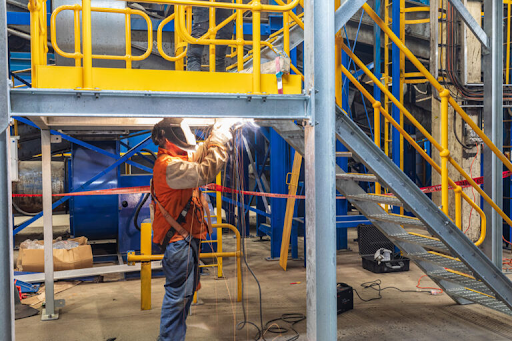Sheet metal fabrication has come a long way from traditional bending and folding methods. In the modern era, the demand for precision, efficiency, and customization has driven the exploration and adoption of innovative techniques in sheet metal fabrication services. Manufacturers and engineers are constantly pushing the boundaries, seeking new ways to enhance the quality and versatility of metal components. In this article, we will delve into some of the cutting-edge techniques that are revolutionizing the sheet metal fabrication industry.
1. Laser Cutting Technology: Precision at its Finest
One of the most significant advancements in sheet metal fabrication is the widespread adoption of laser cutting technology. Laser cutting offers unparalleled precision, allowing manufacturers to create intricate designs and patterns with utmost accuracy. This sheet metal fabrication service utilizes a high-powered laser to cut through sheet metal with incredible speed and efficiency. Not only does laser cutting ensure a clean and precise finish, but it also minimizes material wastage, making it an eco-friendly option for sheet metal fabrication.
2. Waterjet Cutting: Where Power Meets Precision
While laser cutting is renowned for its precision, waterjet cutting takes a different approach by harnessing the power of water mixed with abrasive particles. This method is ideal for cutting a wide range of materials, including metals, plastics, and composites. Waterjet cutting excels in projects where heat sensitivity is a concern, as it produces minimal heat-affected zones. With the ability to cut thick materials with ease, waterjet cutting has become a go-to solution for industries requiring precision and versatility in sheet metal fabrication.
3. CNC Machining: Unleashing the Power of Automation
Computer Numerical Control (CNC) machining has revolutionized the way sheet metal components are fabricated. This automated process utilizes pre-programmed computer software to control the movement of machining tools and equipment. CNC machining ensures unparalleled accuracy and repeatability, making it an indispensable tool for high-volume production runs. The ability to create complex shapes and intricate details with minimal human intervention has significantly increased the efficiency of sheet metal fabrication services.
4. 3D Printing in Sheet Metal Fabrication: A New Dimension
The integration of 3D printing technology into sheet metal fabrication is pushing the boundaries of what is possible. Additive manufacturing processes enable the creation of complex geometries that were once challenging or impossible to achieve with traditional methods. This innovative approach not only allows for greater design freedom but also reduces material waste by building components layer by layer. 3D printing in sheet metal fabrication is particularly beneficial for prototyping and low-volume production, offering a cost-effective and time-efficient solution.
5. Hydroforming: Shaping the Future of Sheet Metal
Hydroforming is a technique that involves using pressurized fluid to shape sheet metal into complex forms. This process offers several advantages, including increased strength and reduced weight of the final product. Hydroforming is particularly suitable for producing intricate and lightweight components used in industries such as automotive and aerospace. By eliminating the need for multiple tooling setups, hydroforming streamlines the production process, resulting in cost savings and improved efficiency.
6. Progressive Die Stamping: Efficiency in Mass Production
For high-volume manufacturing, progressive die stamping has proven to be a game-changer. This process involves a series of stamping operations performed by a set of dies in a progressive manner. With each stroke, the sheet metal undergoes various forming, cutting, and shaping operations until the final part is produced. Progressive die stamping is known for its speed and efficiency, making it an ideal choice for industries requiring large quantities of consistent, high-quality components.
Conclusion: A New Era in Sheet Metal Fabrication
As technology continues to advance, the landscape of sheet metal fabrication services is evolving rapidly. The innovative techniques discussed above are reshaping the industry, offering new possibilities in terms of design, precision, and efficiency. From laser cutting to 3D printing and beyond, these advancements are enabling manufacturers to meet the growing demands for customization and performance across various sectors. As we venture further into this new era of sheet metal fabrication, it is clear that the exploration of innovative techniques is key to unlocking the full potential of this dynamic and essential manufacturing process.
Top of Form








